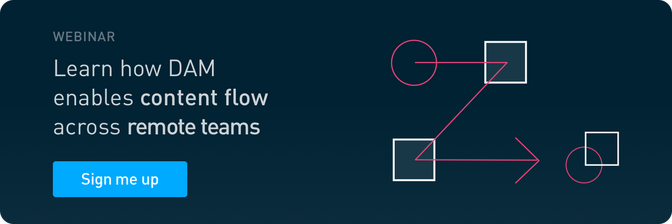Welcome to the acceleration of the remote workforce.
Some companies are more prepared to work from home with Software as a Service (SaaS) infrastructure already in place, while some are scrambling to ensure they have the right access to communication and collaboration systems, files and contact information.
Collaboration and communication software like Zoom, Slack, etc. were already becoming increasingly important to globally distributed teams, but overnight, SaaS solutions like these became mission-critical to business operations for many. Even Jimmy Fallon, host of The Tonight Show has been “Zooming” right along with all of us - adapting to new ways of working and relying on SaaS to get the job done.
Two years ago, over 5 million people were working from home at least part-time according to the Global Workplace Analytics’ analysis of 2018 American Community Service (ACS) data. Associated Press reported that: "...more than one-fifth (1.5 billion) of the world’s population was ordered or urged to stay in their homes."
The remote workforce probably increased tenfold, almost overnight. And, more importantly, the internet didn’t break! 😅🤞
With the rise of a newly-remote and distributed workforce across the globe, digital solutions that increase collaboration, communication, and transparency have replaced old ways of doing things almost overnight. You can’t just drop by someone’s desk and ask if they have xyz file anymore. The world is changing and the way we get digital business done is changing as well.Andrew Hally
CMO at Bynder
Right now, SaaS infrastructure is helping companies over-communicate critical information (streaming all-hands/company-wide meetings), share communication plans across partners and internal employees, and quickly deliver files to remote workers.
SaaS solutions, because they are innately able to be deployed and implemented remotely, are in a unique position to help companies adjust to remote work and successfully navigate this major disruption and shift in the way we all get business done. For a blueprint, look at how distributed companies like Toptal, Automattic and InVision structure their tech stacks, implement policy, uphold accountability, and get it done.
Don’t half-SaaS it
The SaaS model is a natural fit for an increasingly distributed workforce. The current global situation will likely advance that trend more quickly. The on-prem model doesn't work with this, as it forces every company into being a dial-up/VPN provider.
Anyone who has ever tried to VPN into a company shared network drive to access files via a GUI knows that it’s painful at best. (Command line is a different story, but the user experience is not ideal.) SaaS tools connect the distributed workforce, enable collaboration in the cloud, and provide a painless experience for accessing important content and company digital assets.
The speed at which many companies have been able to pivot to or transition to “full-SaaS” is a testament to how much we’ve “digitally transformed” as a global workforce. Thanks to SaaS, work goes on.
For an increasingly distributed modern, global workforce, SaaS solutions are imperative to communication, consistency, and availability of information, as well as ease of scale. As a Solutions Architect, remote workforce tools like Slack, Zoom, and our DAM allows me to do every function of my role without ever leaving my house. In a world where sudden situations arise, having a tech stack that is purely SaaS enables companies like us to shift our workforce from office to remote in just a few hours.Jami Rahman
Solutions Architect at Bynder
SaaS foundations to support remote work
When things have normalized, many companies will ensure contingency plans are put in place to make the transition to remote distributed workforce easier, quicker and as future-proof as imaginable. A certain percentage of people WFH may never go back to the office. They’ll discover WFH is a good fit, and companies will start making WFH a standard perk - accelerating the trend of distributed companies.
In early 2020, over half of the workforce already felt that "the option to work remotely is their most preferable employment perk."
This was the idea around our first go at remote work as a company in 2017. In 2018, we used our remote week as an experiment to test how future-proof we were and to see if our tech stack would stack up. The model proved successful, but it was a luxury to do it in the first place - not a necessity. And what made it doable was that everything we use from a tech infrastructure perspective is SaaS. We rely on our IT people, but there’s no reason any of us need to be in the office to keep doing business as usual if the office needs to be shut down.
There will be major shifts in ways of working in the post-COVID world—increasingly digitized operations, more flexible working arrangements, but we’ll also see companies adopting fully-SaaS tech stacks because they can better support distributed workforces for several reasons including cost, reliability, and scalability.
SaaS solutions like Zoom, Slack and Bynder are (and will continue to be) mission-critical for the distributed global workforce, and especially for companies in the middle of a business and marketing pivot.
Three important benefits of SaaS over on-prem solutions include:
- Accessibility: Always online, anywhere, anytime
- Cost-savings: Reduction in IT spend, in-house maintenance
- Operational efficiency: Visibility into workflows, content, communications
Digital transformation has changed how we live our lives and how we experience the world. Your employee engagement is just like your customers. Always online, 24x7, global and you need to connect and collaborate to drive a productive workforce. Cloud technologies have been the backbone of this transformation.Bob Hickey
COO at Bynder
What’s your SaaS situation?
We’re seeing companies falling into a few different buckets:
1. 🙌 Ready, already have the SaaS infrastructure, processes and communication plans in place
2. 👌 Almost ready, have some of the SaaS infrastructure already, but still ironing out workflows and communication strategies
3. 🤦 Not fully prepared and just now understanding the urgency around needing to implement additional SaaS tooling to support the remote workforce
SaaS solutions make it easier for teams transitioning to remote work, so if you find:
- Your marketing team needs additional support to collaborate online
- You need to provide centralized access to your brand’s digital content in the cloud
- You recognize now is the time to future-proof your stack
Then it sounds like it might be a good time to consider how SaaS-friendly your tech stack is.
I can only imagine the current situation will not only accelerate the distributed workforce trend, but also the speed at which companies adopt and heavily utilize SaaS products. It’s a catalyst for digital transformation as well.Kevin Broom
CPO at Bynder
If you’re interested in seeing how other brands are using SaaS technologies to adjust their operations and flow of content across stakeholders with a newly remote workforce, check out our free on-demand webinar now:























